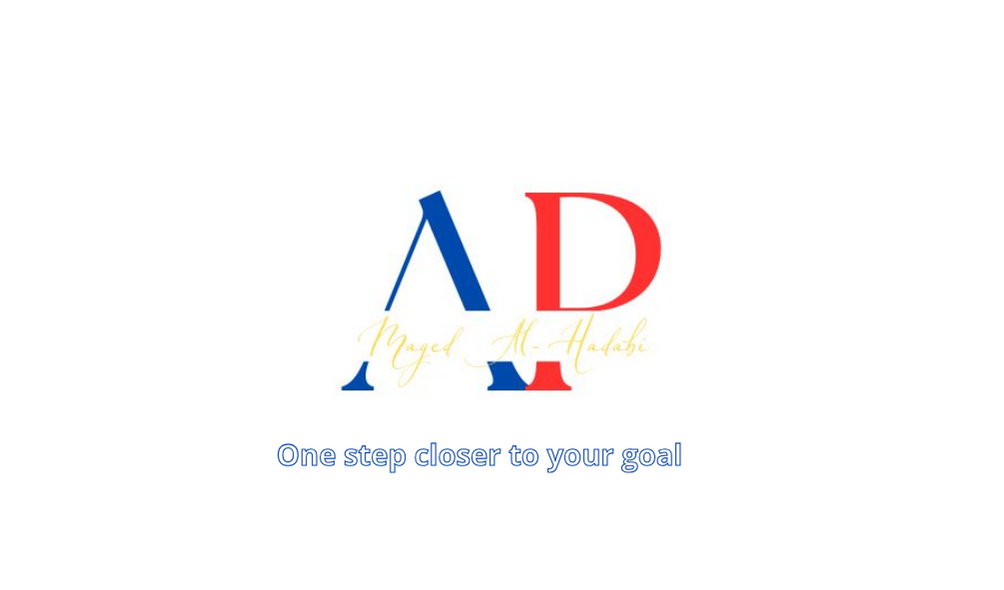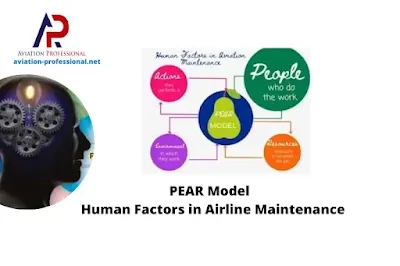What do you think when I say PEAR? It is not that known fruit, PEAR is a human factors model that helps airlines safety managers understand human factors associated with human errors in aviation maintenance.
Traditionally, Human Factors researches endeavors have been directed toward flight crew performance and, to a lesser extent, toward the performance of air traffic controllers for a long time. There was little consideration of the Human Factors issues that could affect aircraft maintenance personnel.
While the fact is, human error in aircraft maintenance has indeed had as dramatic an effect on the safety of flight operations as the errors of pilots and air traffic controllers.
Aviation maintenance technicians are confronted with a set of human factors unique within aviation. Oftentimes, they are working in the evening or early morning hours, in confined spaces, and humidity conditions. The maintenance work can be physically strenuous, yet it also required attention to detail.
For more than decades, the PEAR model for human factors has been used as a memory jogger, or mnemonic, to characterize human factors in aviation maintenance.
Examples of Aviation Maintenance Errors
The fact is that aviation safety relies heavily on aviation maintenance work. When it is not done correctly, it contributes to a significant proportion of aviation accidents and incidents.
I will mention for you some examples of maintenance errors:
- Installing parts incorrectly.
- Missing parts during maintenance tasks.
- Not performing necessary checks.
Aircraft maintenance errors have been reported as a contributing factor in 15% of major aircraft accidents from 1982 to 1991, at a cost of over 1400 lives.
Safety Management and PEAR Model
As part of the airline’s Safety Management System, policies are established, and hazards are identified and mitigated.
The human factors program, exemplified by the PEAR model, provides methods for identifying and controlling many airlines' potential hazards and should be an integral part of an airline's SMS program.
Reason’s SWISS CHEESE model, SHELL model, or PEAR model
Human factors specialists may use Reason’s SWISS CHEESE model, SHELL model, or PEAR model.
You may ask | What are the differences between these three human factors models?
Well, the SHELL model is based on ergonomics; the Reason’s SWISS CHEESE model focused on the importance of organization; the PEAR model is similar to the SHELL model but more understandable than the SHELL model, especially in aviation maintenance.
PEAR Model Human Factors
PEAR model human factors prompt recall of the four considerations for HF programs:
1- People - who do the work
2- Environment - in which they work
3- Actions - they perform; and
4- Resources - necessary to complete the job.
PEAR Model | People - who do the work
A- Physical Factors
Aviation maintenance technicians come in all shapes and sizes. Other variables include age, gender, health, experiences, and capabilities. Even though we experience variability from one form to another in physical attributes, for the most part, these characteristics are the most concrete. Our physicality directly impacts the job to be done.
There are 5 Physical Factors. I will give you a short explanation for each factor based on my understanding.
1- Physical Size
Physical size deals with issues of anthropometrics, matching the people to the job. At times various tasks may take into consideration the variable of size.
For example, a taller aviation maintenance technician may not need a ladder to perform a task.
2- Gender
We agree with the principles of gender equality rights. But when it comes to the safe lifting of weight. The manual handling guidelines suggest that the maximum safe lifting weight for a woman is 16kg, and the maximum safe lifting weight for men is 25kg.
3- Age
Aging is most likely to affect job performance if job tasks require sensory perception, selective attention, working memory, information processing, rapid reaction, or physical strength.
4-Strength
It’s not a secret that people who feel better are more successful in their daily lives. What you may not know is muscle strength can improve your health and job performance.
5- Sensory Limitations
The effect of losing one or more of our senses can result in an individual’s inability to interact with the work environment.
B- Physiological Factors
Physiology is a dynamic state that changes based on health, habits, and the way we live.
It is a bit more abstract, but this attribute is tied directly to our physical world.
1- Nutritional factors
Maintaining a healthy food habit reduces anxiety and stress, allows us to think clearly, and keeps us physically fit. As a result, it enhances our confidence.
2- Health
Poor health leads to minimal productivity — when an aviation technician is away from work due to an illness, that will likely be one case of poor productivity.
3- Lifestyle
A more balanced work lifestyle can lead to higher productivity.
4-Fatigue
Fatigue can adversely affect safety, health, work performance, and worker productivity, and it can occur if there are risk factors. Fatigue – faced by AMT aviation - is a major human factor that has contributed to many human errors resulting in aircraft incidents and accidents.
5- Chemical dependency
The body's physical and/or psychological addiction to a psychoactive (mind-altering) substance, such as narcotics, alcohol, or nicotine. You may need to read my previous article about aircraft crashes - central airlines.
C- Psychological Factors
Psychological differences are not as easy to identify technician's psychological self takes into consideration their:
• Experiences,
• Knowledge,
• Ttraining
• Attitude, and
• Emotional state
These factors inform our attitudes, awareness, and cognitive capabilities.
1-Workload
Aviation technicians who regularly work long hours and overtime damage their health, making maintenance errors more likely.
2- Experience
Aviation technician work experience leads to seriousness in what aviation technicians do, mature judgment, and stability.
3- Knowledge
Knowledge is familiarity or awareness of someone or something, such as facts (descriptive knowledge), skills (procedural knowledge), or objects (acquaintance knowledge) contributing to an aviation maintenance technician’s understanding.
As we know, knowledge can be acquired in a wide range of ways and from many sources, including but not limited to perception, reason, memory, testimony, scientific inquiry, education, training, and practice.
4- Training
Education, training, and hands-on training - Including human factors training - are the most important stage of an aviation maintenance technician's journey into the career field! Without proper training, aircraft would not be maintained and repaired correctly, leading to safety issues and a halt to the aviation industry.
5-Attitude
The working attitude that causes concern is the unwillingness to change -that is the way we have always done it- posture prevents the opportunity to evaluate the workplace and institute positive change that can make a work environment safer.
6- Mental or emotional state
The emotional state influence perception, thinking, and decision-making.
D- Psychosocial Factors
The psychosocial self is defined by how we relate to others in a team, and these factors directly impact teamwork performance levels.
1- Interpersonal conflicts
Interpersonal conflicts at work (ICW) refer to negative interactions with others in the workplace, For example, the argument with coworkers and supervisors. It is a risk factor.
Summary
Human factors design should focus on people in the existing workforce of airlines. The airlines must match the physical characteristics of each aviation technician to the tasks each one performs.
The airlines must consider factors like person size, strength, age, eyesight, and more to ensure aviation technician is physically capable of performing all the aircraft maintenance tasks making up the job.
A good human factors program in an airline considers the limitations of humans and designs the job accordingly.
The Main References:
1- Chapter 14, Human Factors
2- A Model to Explain Human Factors in Aviation Maintenance, By Dr . William B. Johnson, and Dr.Michael. Maddox.

